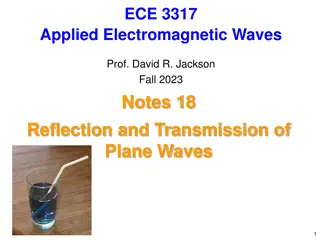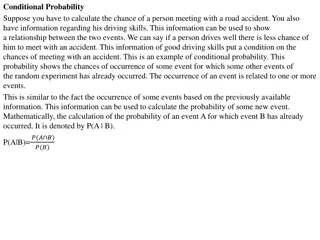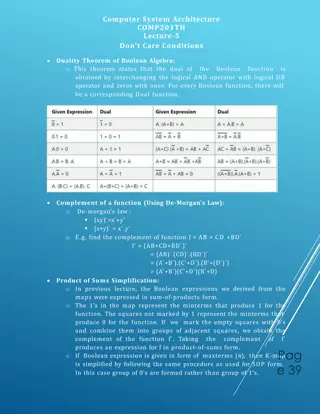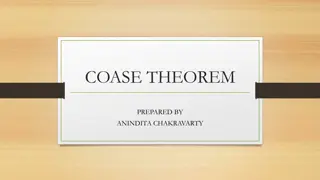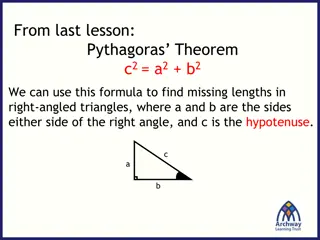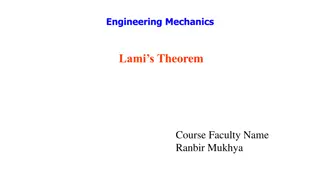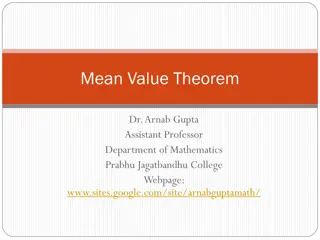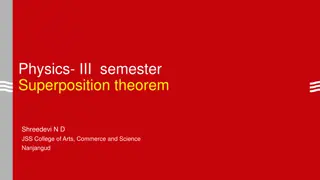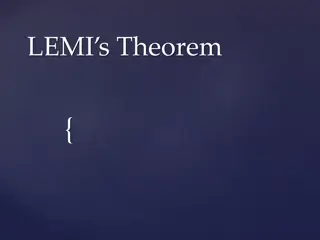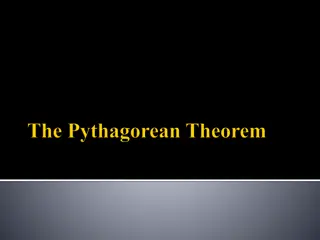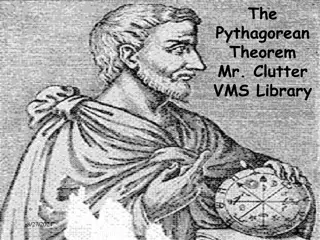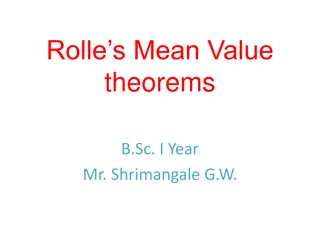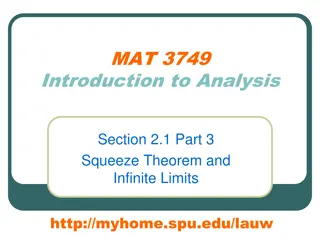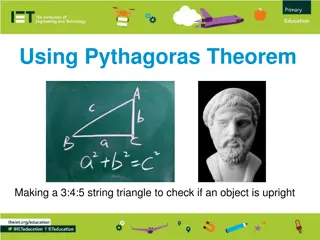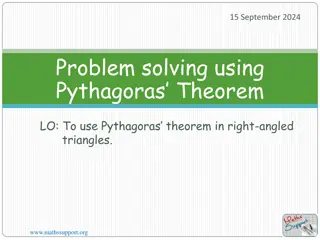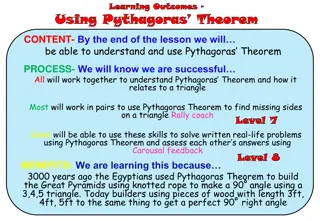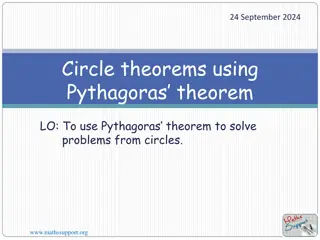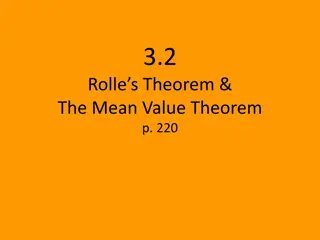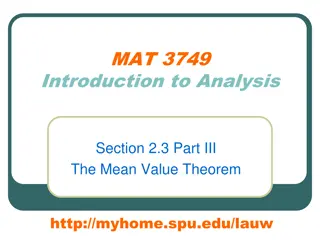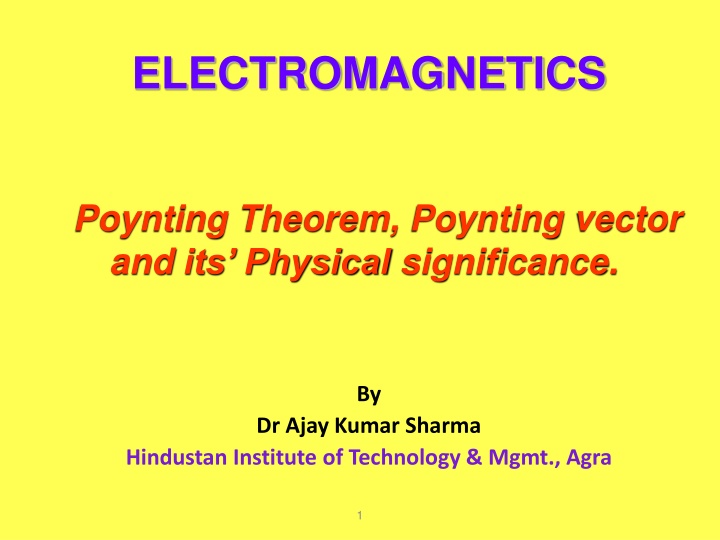
Poynting Theorem and Its Physical Significance
Electromagnetic energy and the Poynting vector play a crucial role in understanding the energy flow in electromagnetic fields. By analyzing the Poynting vector, one can gain insights into how energy is transferred and dissipated in various mediums and structures, such as coaxial cables. The application of Poynting's Theorem in different scenarios like DC power flow provides valuable theoretical foundations for engineers and researchers in the field of electromagnetics.
Uploaded on | 1 Views
Download Presentation

Please find below an Image/Link to download the presentation.
The content on the website is provided AS IS for your information and personal use only. It may not be sold, licensed, or shared on other websites without obtaining consent from the author. If you encounter any issues during the download, it is possible that the publisher has removed the file from their server.
You are allowed to download the files provided on this website for personal or commercial use, subject to the condition that they are used lawfully. All files are the property of their respective owners.
The content on the website is provided AS IS for your information and personal use only. It may not be sold, licensed, or shared on other websites without obtaining consent from the author.
E N D
Presentation Transcript
ELECTROMAGNETICS Poynting Theorem, Poynting vector and its Physical significance. By Dr Ajay Kumar Sharma Hindustan Institute of Technology & Mgmt., Agra 1
INTRODUCTION Electromagnetic Energy: Poynting Theorem 1 v = . U E Ddv Elect. P.E= e 2 1 v Magnet. P.E= = Bdv . U H m Poynting 2 B . = . H E H B . . H E E H = E t t B D . D D H = . . . H E E J . = + E H E J = + H J t t t t . ( ) ( ) = . . E H E E H 2 D E E = = . . E E 2 t t t B D ( ) ( ) = . . . . E H H E E J 2 B H H = = t t . . H H 2 t t t 2
( ) ( ) 2 D E E = . . . ( ( . E H H E B E H = = . . E E D 2 t t t ) ) = = . . . E H H E E J ( ) 2 t t B H H = = . . H H 2 t t t 1 ( ) ( ) = + . D . B . . E H E H E J 2 t Rate of energy trasf.into the EM field through the motion of free charge in vol v 1 ( ) ( ) v v v = + . D . B . . E H dv E H dv E Jdv 1 v 2 ( t ( ) ) v = + ds . D . B . . E H E H dv E Jdv 2 t Rate of change of EM energy stored in vol.v EM energy crossing the closed surface per second 3
Applications of Poynting Theorem The Poynting vector in a coaxial cable For example, the Poynting vector within the dielectric insulator of a coaxial cable is nearly parallel to the wire axis (assuming no fields outside the cable) - so electric energy is flowing through the dielectric between the conductors. If the core conductor was replaced by a wire having significant resistance, then the Poynting vector would become tilted toward that wire, indicating that energy flows from the electromagnetic field into the wire, producing resistive Joule heating in the wire. The Poynting vector in plane waves In a propagating sinusoidal electromagnetic plane wave of a fixed frequency, the Poynting vector oscillates, always pointing in the direction of propagation. 7
DC Power flow in a concentric cable Application of Poynting's Theorem to a concentric cable carrying DC current leads to the correct power transfer equation P = VI, where V is the potential difference between the cable and ground, I is the current carried by the cable. This power flows through the surrounding dielectric, and not through the cable itself. However, it is also known that power cannot be radiated without accelerated charges, i.e. time varying currents. Since we are considering DC (time invariant) currents here, radiation is not possible. This has led to speculation that Poynting Vector may not represent the power flow in certain systems. 8
References Introduction to Electrodynamics by David. J. Griffith : Pearson Education Publication Engineering Physics-II by Satya Prakash :Pragati Prakashan Enginnering Physics-II by S.K.Gupta : websites: www.nptel.in , www.wikipedia free encyclopedia. 17

